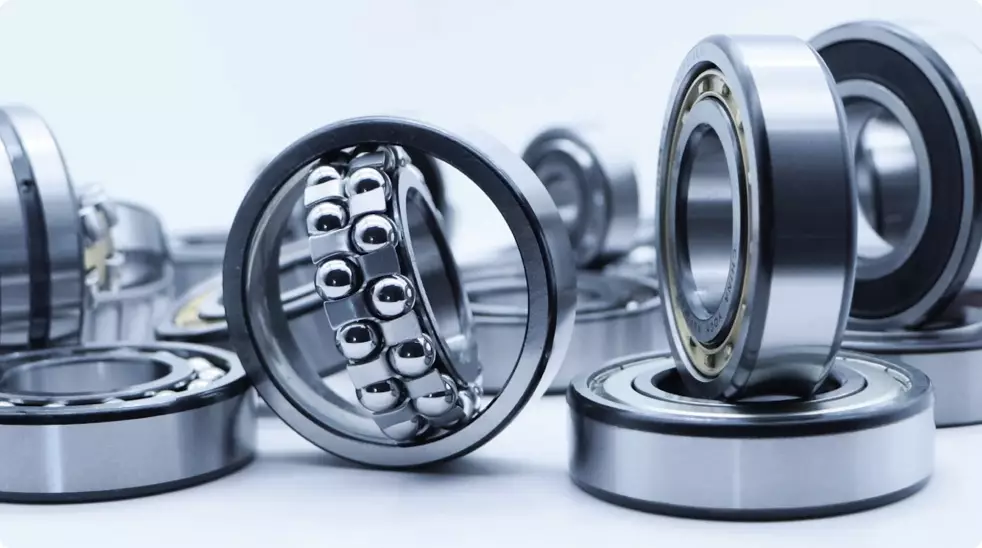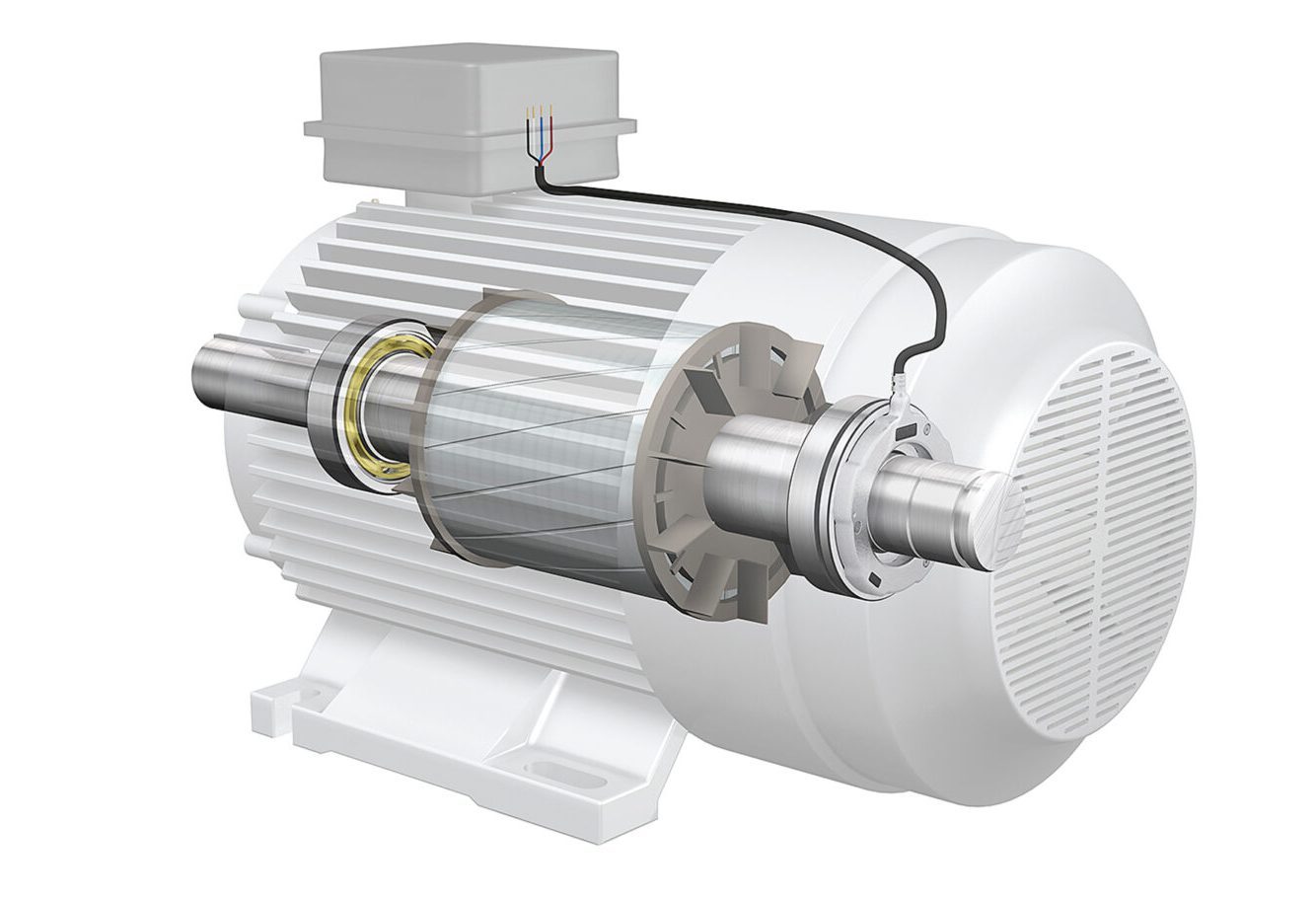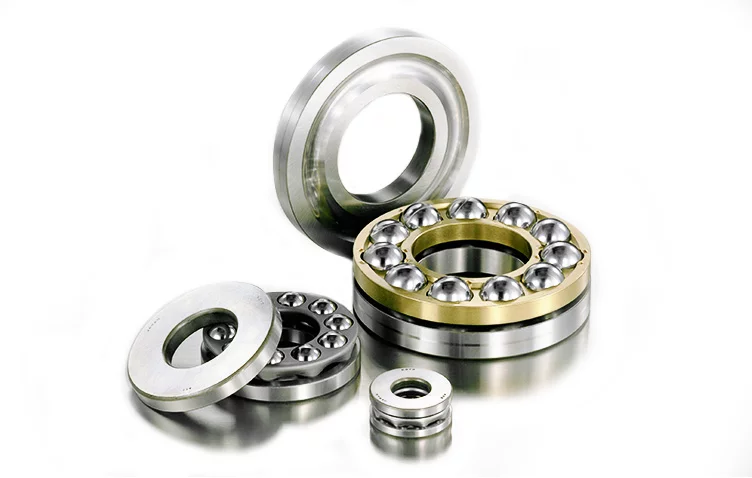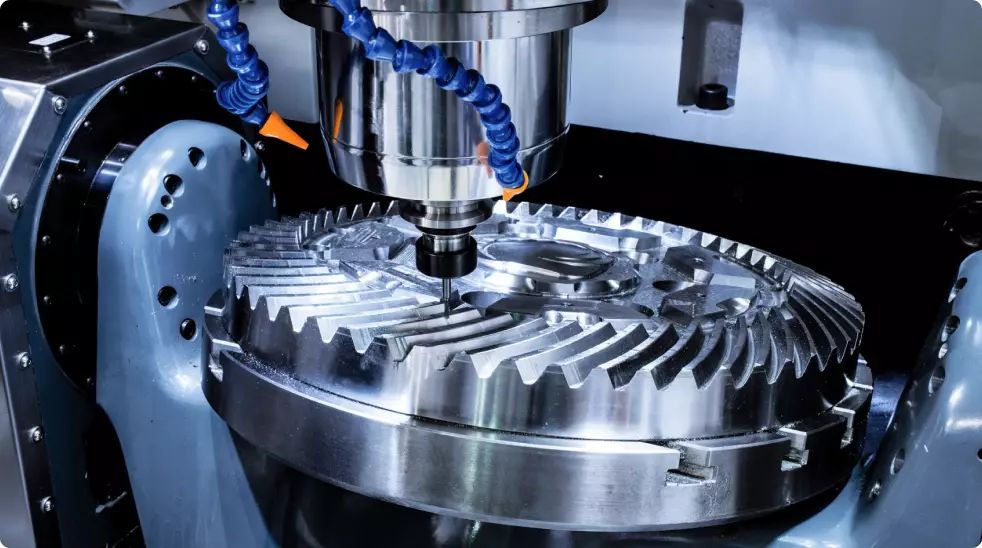
Sealed, Open and Shielded Bearings comparison
Open bearings

An open bearing usually operates in an environment where the bearing is immersed in fluids such as lubrication oil. Open bearings do not have seals or shields, and they expose the inner raceways, cages, and balls to the environment. Examples would be open bearings used to support shafts in gearboxes and transmissions, where lubrication is constant and present.
Shielded Bearings

A shielded Bearing is used in any environment where contamination is not a major issue. Usually specified for applications where the designer desires low starting and running torque, as well as enclosing the bearing, limiting the ingress of minor contaminants such as dust.
Shielded bearings are often found in electric motors, fans, power tools, and office machinery. The shield has no contact with the inner ring, where a small gap exists, allowing for low starting and running torque. Shielded bearings are commonly specified with oil lubrication, and usually, starting and running torque is a consideration.
Sealed Bearings

Manufacturers use various designs for achieving the proper fitment and the degree of protection provided by the seal.
Why specify one over another enclosure type of another and why is it important?
Bearing seals have two main functions: to prevent lubricating oil from leaking out and to prevent dust, water, and other contaminants from entering the bearing. Bearings have to be adequately lubricated to prevent direct metallic contact between the rolling elements, raceway, and cages to prevent wear and to protect the bearing surfaces against corrosion.
Sealed Bearings
Bearings with shields or seals filled with grease are widely used. Grease has the advantage over oil in that it’s more easily retained and takes longer to be compromised than oil.
Sealed bearings have the advantage of being lubricated for life, are suitable for normal and light loads with moderate to low speeds. Sealed bearings generally have a low production cost and maintain no need for relubricated or greased.
As such these bearings are used widely in electric motors, fan motors, and automation equipment.
Seal Types
When selecting a seal the following factors need to be taken into consideration:
- the type of lubricant( oil or grease)
- seal peripheral speed
- shaft fit
- space constraints
- seal friction
As mentioned, seals are broken down into non-contact and contact types.
Non-Contact Seals and Shields
Non contact seals and Shields will demonstrate a small gap between the inner diameter of the seal/shield and the inner ring of the bearing. In order to improve the seal the gap is filled in with lubricant.
Contact Seals
Contact seals accomplish their sealing action through contact pressure ( the lip) which is made of Buna N rubber normally. Contact seals are by far the best way to seal a bearing.
Being far superior, contact seals are efficient, although they demonstrate higher friction torque and result in temperature rise coefficients being higher. When the portion of a contact seal rotates while in contact with the shaft, the allowable seal peripheral speed varies depending on the seal type.
Lubrication is necessary at the contact surface between the lip portion of the contact seal and the shaft. Ordinary lubricant can be used for this purpose.
As demonstrated, the most commonly specified types of enclosures for bearings are:
- rubber seals
- steel shields
- open
In some cases, your application may require an OPEN bearing to have a seal on one side and be open on the other side. A seal may be required on the outside facing the environment and the open side is facing inward.
The reason may be to reduce drag or starting and running torque while still protecting the bearing.
The challenge for sealing bearings is to seal the bearing by protecting the bearing from contaminants and running efficiency.
Advantages of Sealed Bearings
Sealed bearings offer multiple benefits in various applications:
Contamination Protection
Sealed bearings are particularly effective at preventing external contaminants, such as dust, dirt, and moisture, from entering the bearing. This is essential in environments where contamination can significantly reduce bearing life.
Lubrication Retention
They are designed to retain the lubricant inside the bearing. This helps in maintaining the correct amount of lubrication throughout the bearing’s service life, thus reducing the need for regular maintenance and relubrication.
Extended Bearing Life
By preventing contamination ingress and retaining lubrication, sealed bearings can significantly extend the bearing life compared to their open counterparts.
Reduced Maintenance
The sealed design minimizes maintenance intervals, providing cost and time savings.
Versatility
Sealed bearings are suitable for a wide range of applications, especially where external contamination is a major concern.
Difference Between Bearing Shields and Bearing Seals
Bearing shields and seals are both designed to protect bearings from external contaminants and retain lubrication, but there are distinct differences:
- Construction
Shields are typically made of metal and fit into a groove on the outer ring without making contact with the inner ring. Seals, on the other hand, are made of elastomeric material and make light contact with the inner ring, providing a barrier.
- Protection Level
Seals offer a higher degree of protection from contaminants and moisture due to their contact nature. Shields provide protection primarily from larger contaminants but are less effective against fine particles and moisture.
- Friction
Since seals have contact with the inner ring, they generate more friction than shields. This may result in slightly higher operating temperatures for sealed bearings compared to shielded ones.
- Lubrication
Sealed bearings are often pre-lubricated, making them maintenance-free for many applications. Shielded bearings might need occasional relubrication.
Comparison Between Sealed and Shielded Bearings
| Feature | Sealed Bearings | Shielded Bearings |
| Contamination Protection | High | Moderate |
| Lubrication Retention | Excellent | Good |
| Bearing Life | Extended | Standard to High |
| Maintenance | Reduced | Regular |
| Friction | Higher due to seals | Lower |
| Application Versatility | Wide Range | Specific to Environment |
The choice between sealed and shielded bearings will depend on the specific requirements of the application. While sealed bearings offer superior protection and maintenance advantages, shielded bearings can be more suitable in situations where minimal friction and operating temperature are crucial. It’s essential to assess the operational environment and demands before making a selection.
For additional information, please Contact us.


